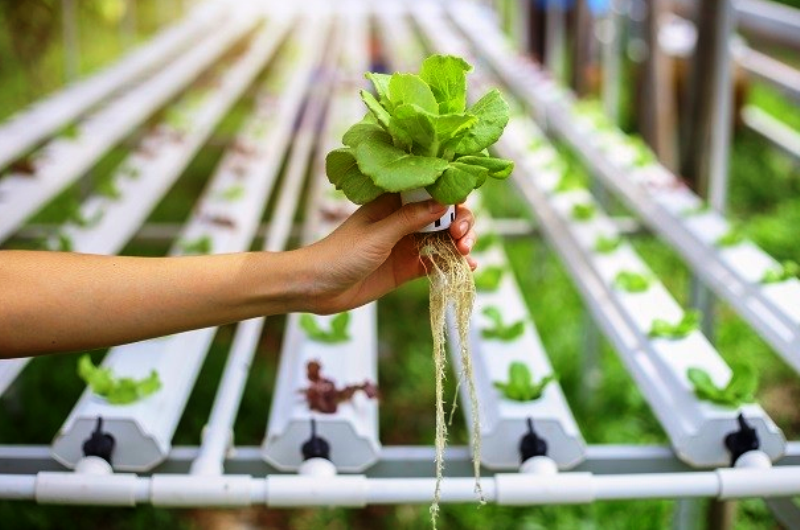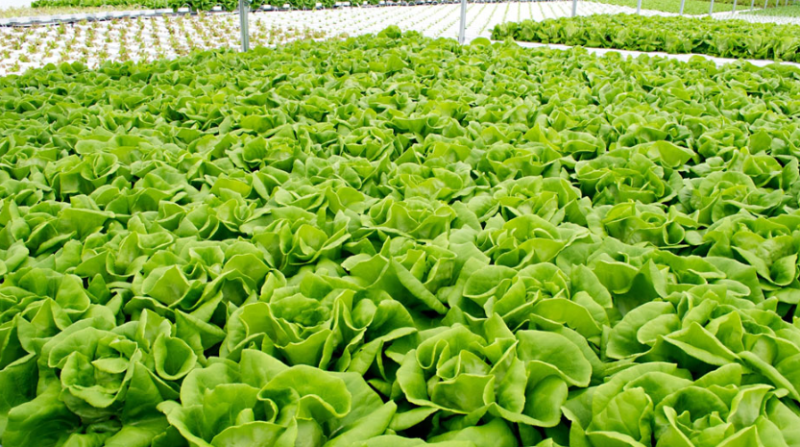
Among technologies that can potentially influence the future of agriculture and seed industry, hydroponics is one of the most exciting. Hydroponics is basically soil-less cultivation where plants are grown without soil and by providing nutrients to water and roots are submerged in water to grow (soil-less growth of plants and without conventional soil). It uses artificial means to support and nutrient solutions to provide the required nutrition to plants. There are different categories of hydroponics based on the solution used.
In order to feed the world population rapidly, Hydroponics could be one of the go-to approaches because one can grow plants rapidly, and in habitats that don’t normally support them for commercial units ( hydroponic) 1000 sqm or above is given by the National Horticulture Board. There is also provision for hi-tech horticulture project credit linked assistance programme by the NHB for 2500 sqm or above.
While the hydroponics technology has been in existence for more than 50 years, the adoption and acceptance has been very low till date probably due to the high capital investment required, running costs and expertise needed . It forms a miniscule percentage (<0.1%) of overall global cultivation. There is mixed opinion on the question of hydroponics vs. conventional grown food among farmers and chefs in terms of taste and consumer acceptance. With forthcoming nutritional research, this aspect is only going to get better.

Hydroponics is poised to become increasingly relevant due to its inherent advantages to combat land, water, labor shortages while being environment and technology friendly. Future of this technology can be assessed by benefits accruing to the early adopters e.g. Tokyo is growing hydroponic rice in a controlled environment achieving four crop cycles instead of one; Organitech, a company in Israel, has overcome dry and arid climate, and is growing crops like bananas, berries, citrus fruits and achieving yield many times more than conventional cultivation.
Advantages and Disadvantages of Hydroponics
Here are few pros and cons for hydroponic approach:
PROS:
-Plants grow so much faster and abundantly than they do in traditional farming
-No seasonal growing constraints, thanks to nutrient solutions, artificial lights, heaters and indoor growing conditions
-Most pests and predators are kept at bay
CONS:
-The start-up costs for the required equipment are incredibly expensive
-Very high running costs to keep heaters, lights, water purifiers and pumps constantly operating
-Quite a bit of supervision is required
In spite of the above facts few searches has been done in order to get started in the business. May be these ideas can work for you.
How hydroponics is done
Hydroponics, is a subset of hydroculture, which is a method of growing plants without soil by using mineral nutrient solutions in a water solvent. Terrestrial plants may be grown with only their roots exposed to the mineral solution, or the roots may be supported by an inert medium, such as perlite or gravel.
Is hydroponics profitable in India
India is currently importing more than 85% of its exotic vegetables, creating a growth rate of 15-20% per year. Certainly hydroponics or CEA can help fuel this growth given the farming expertise that exists in India. When the land is already owned, capital costs per acre every 5 years are Rs 30.5 lakhs.
How to get subsidy for Hydroponics
In India, the central and state government have subsidized the capital costs for farmers willing to invest in hydroponics. Exact subsidy applicable is different for each state. Recently Maharashtra government has provided 50% subsidy to farmers to adopt hydroponics for growing animal fodder.
Similarly subsidy is available for each state separately by National Horticulture board.(NHB) In order to get the details of their respective states the farmer needs to go to NHB website and search for the subsidies and schemes available at their states and avail the same.
Hope this information works for you. In case you need more information you can put a comment in the comment box below.
Happy farming!!!










